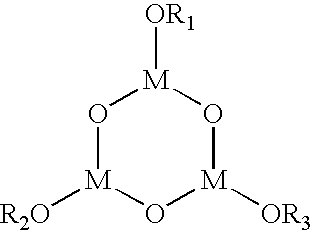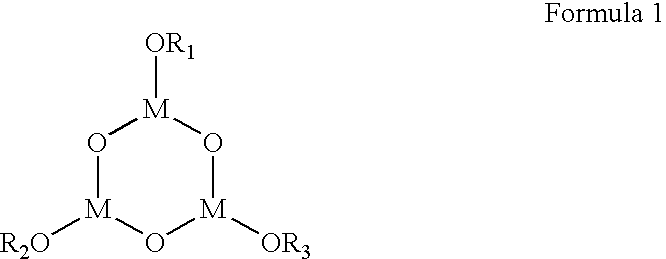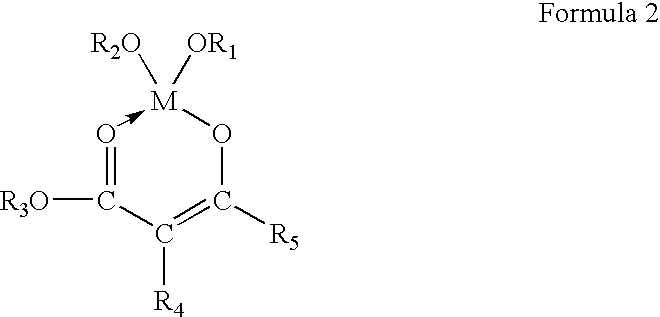Drying agent
a drying agent and drying agent technology, applied in the field of drying agents, can solve the problems of not being able to observe the device through the drying agent, drying agent is difficult to handle, and not being regenerated
- Summary
- Abstract
- Description
- Claims
- Application Information
AI Technical Summary
Problems solved by technology
Method used
Image
Examples
example 1
[0053] As shown in FIG. 4, the organic EL device comprises a device substrate 2 constituting a closed container of an insulating and transparent rectangle-shaped glass substrate. An anode 5 of ITO (indium tin oxide) film is formed on the device substrate 2 as a conductive material having transparency.
[0054] An organic EL film 4 of a thin film of an organic compound is stacked on the upper surface of the anode 5. The organic EL film 4 comprises generally a hole injection film 4a, a hole transportation film 4b, and an electron transporting emitting film 4c.
[0055] A metal thin film as a cathode 6 is formed on the organic EL film 4.
[0056] A rectangle-shaped sealing container 3 as a sealing material for constituting a sealed container is fixed to the periphery of the base substrate 2 by, for example ultraviolet-curing resin type-adhesive 8 in an atmosphere of inert gas from which moisture is removed to the utmost, for example, in an atmosphere of dried nitrogen or dried air. Thereby, the...
example 2
Chemical Formula (11)
[0089] An inner surface of a sealing glass was coated with a toluene-50% solution of a compound illustrated by the chemical formula (11) (HOPE PHARMACEUTICAL CO. under the trade name "Chelope-EH-2") and dried to form a substrate. By using the substrate a sealing container was made by using adhesive. The same procedures as those of Example 1 were repeated except for the above described procedures.
[0090] Next, the sealing container was heated at a temperature of 85.degree. C. for one hour to promote the curing reaction of the adhesive to form an organic EL device.
[0091] The state of emission of the organic EL device was observed by a microscope.
[0092] Then, after an accelerated life test was carried out on the emitting part of the organic EL device at a temperature of 85.degree. C. and at relative humidity of 85%, the growth of the dark spot was observed. After the elapse of 100 hours, the device was taken out of an accelerated life test chamber, and the state of ...
example 3
Chemical Formula (12)
[0094] An organic EL device was prepared by using the same procedures as those of Example 1, except that the compound of "Chelope-C10-2," trade name for HOPE PHARMACEUTICAL CO. was used as the compound illustrated by the chemical formula (12).
[0095] The state of emission of the organic EL device was observed by a microscope. Then, after an accelerated life test was carried out on the emitting part of the organic EL device at a temperature of 85.degree. C. and at relative humidity of 85%, the growth of the dark spot was observed. After the elapse of 100 hours, the device was taken out of an accelerated life test chamber, and the state of emission was observed by means of a microscope. As a result, it was confirmed that the dark spot was hardly grown. Further, the generation and growth of the dark spot at the periphery of the organic EL device was hardly different from that at the central portion of the organic EL device.
[0096] For reasons stated above, it is evid...
PUM
| Property | Measurement | Unit |
|---|---|---|
| temperature | aaaaa | aaaaa |
| RH | aaaaa | aaaaa |
| humidity | aaaaa | aaaaa |
Abstract
Description
Claims
Application Information
 Login to View More
Login to View More - R&D
- Intellectual Property
- Life Sciences
- Materials
- Tech Scout
- Unparalleled Data Quality
- Higher Quality Content
- 60% Fewer Hallucinations
Browse by: Latest US Patents, China's latest patents, Technical Efficacy Thesaurus, Application Domain, Technology Topic, Popular Technical Reports.
© 2025 PatSnap. All rights reserved.Legal|Privacy policy|Modern Slavery Act Transparency Statement|Sitemap|About US| Contact US: help@patsnap.com



